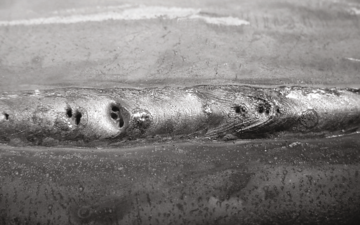Porosity in Welding: Identifying Common Issues and Implementing Finest Practices for Avoidance
Porosity in welding is a prevalent concern that usually goes undetected up until it creates significant troubles with the integrity of welds. This common problem can compromise the strength and sturdiness of bonded structures, positioning security dangers and bring about pricey rework. By understanding the origin creates of porosity and applying effective prevention methods, welders can considerably enhance the quality and reliability of their welds. In this conversation, we will discover the key aspects contributing to porosity formation, analyze its destructive impacts on weld performance, and talk about the very best techniques that can be taken on to lessen porosity event in welding procedures.
Common Sources Of Porosity

One more constant offender behind porosity is the visibility of pollutants externally of the base steel, such as oil, grease, or corrosion. When these pollutants are not efficiently eliminated prior to welding, they can vaporize and end up being entraped in the weld, triggering issues. Moreover, using unclean or wet filler products can introduce contaminations right into the weld, contributing to porosity concerns. To minimize these typical root causes of porosity, detailed cleansing of base steels, proper protecting gas option, and adherence to optimal welding parameters are important practices in attaining top quality, porosity-free welds.
Effect of Porosity on Weld High Quality

The presence of porosity in welding can significantly endanger the architectural stability and mechanical homes of welded joints. Porosity creates spaces within the weld metal, damaging its total stamina and load-bearing capacity.
Welds with high porosity levels tend to show reduced effect toughness and reduced ability to flaw plastically prior to fracturing. Porosity can hamper the weld's ability to properly transmit pressures, leading to early weld failure and possible safety dangers in critical frameworks.
Ideal Practices for Porosity Prevention
To improve the architectural integrity and high quality of bonded joints, what particular procedures can be applied to reduce the event of porosity during the welding process? Porosity avoidance in welding is important to make sure the integrity and stamina of the last weld. One reliable technique appertains cleansing of the base steel, getting rid of any pollutants such as corrosion, oil, paint, or moisture that might bring about gas entrapment. Making sure that the welding tools remains in good condition, with clean consumables and proper gas circulation prices, can additionally significantly decrease porosity. Furthermore, preserving a secure arc and regulating the welding criteria, such as voltage, current, and travel rate, assists produce a constant weld swimming pool that lessens the threat of gas entrapment. Making use of the appropriate welding technique for the particular material being welded, such as readjusting the welding angle and gun position, can further prevent porosity. Regular evaluation of welds and immediate remediation of any issues identified during the welding procedure are essential practices to stop porosity and produce high-grade welds.
Importance of Correct Welding Methods
Implementing appropriate welding techniques is critical in making certain the structural honesty and high quality of welded joints, developing upon the structure of effective porosity prevention procedures. Excessive warm can lead to boosted porosity due to the entrapment Visit Website of gases in the weld swimming pool. Additionally, utilizing the ideal welding parameters, such as voltage, current, and travel rate, is vital for achieving sound welds with very little porosity.
Moreover, the selection of welding procedure, whether it be MIG, TIG, or stick welding, should line up with the certain needs of the task to ensure optimal results. Appropriate cleaning and preparation of the base steel, as well as choosing the ideal filler product, are additionally crucial components of competent welding methods. By adhering to these finest methods, welders can reduce the danger of porosity formation and create top notch, structurally audio welds.

Testing and Quality Assurance Procedures
Quality assurance actions play an essential function in validating the honesty and integrity of bonded joints. reference Evaluating treatments are necessary to find and protect against porosity in welding, making certain the toughness and longevity of the end product. Non-destructive screening approaches such as ultrasonic screening, radiographic screening, and visual evaluation are generally utilized to recognize prospective issues like porosity. These methods permit the evaluation of weld quality without compromising the honesty of the joint. What is Porosity.
Post-weld inspections, on the other hand, analyze the last weld for any flaws, consisting of porosity, and confirm that it satisfies defined criteria. Implementing a detailed top quality control plan that includes detailed screening procedures and assessments is extremely important to decreasing porosity issues and making sure the general high quality of bonded joints.
Verdict
In verdict, porosity in welding can be a common problem that affects the high quality of welds. By identifying the typical reasons of porosity and executing ideal practices for avoidance, such as appropriate welding techniques go to my site and screening measures, welders can guarantee high quality and reputable welds. It is necessary to focus on prevention approaches to reduce the incident of porosity and maintain the honesty of welded structures.